IMAGINATION WITHOUT BORDERS introduces the work of Japanese visual artist TOMIYAMA Taeko and, to a lesser extent, the paintings and prints of MARUKI Toshi & MARUKI Iri and Eleanor RUBIN. All four think of themselves as political artists and see their work as a protest against social injustice and the suffering such injustice causes. All four were deeply affected by World War II and their art reflects their shared belief that war is a disaster for everyone.
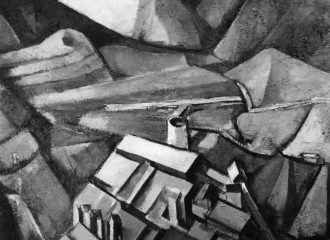
Miners’ Worlds
Minescapes In the 1950s Tomiyama Taeko worked as a freelance journalist, focusing on the lives of miners in Kyushu. While there are almost no operating mines left in Japan today, coal and metal mining were still major industries in the 1950s. Miners were among the first workers to organize labor unions and played a central…
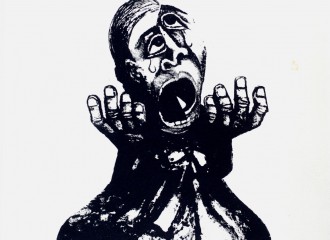
Underground Connections
In 1984 Tomiyama completed a new series of lithographs about the Koreans who had been forced to work in Japan’s mines, construction sites, and factories during the war, called Coerced and Forlorn, which also served as the basis for a film, Pop Out Balsam Seeds! This was her first series to focus on World War…
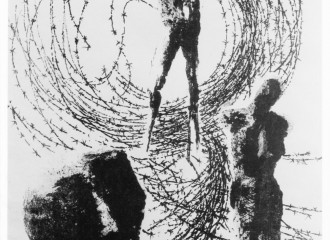
Democracy in Korea
In the early 1970s Tomiyama began working with the international movement to support Korean prisoners of conscience organized by Amnesty International. During the Cold War, the Korean peninsula was—and remains—one of the most volatile places in the world. Tomiyama’s activism on behalf of the Korean democracy movement was partly motivated by her understanding that U.S. support…
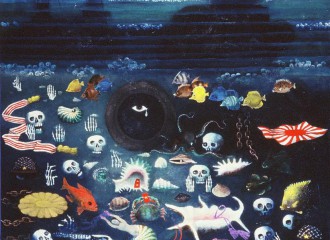
Memories of the Sea
Dedicated to the Memory of the Korean Comfort Women Like many women of her generation around the world, when Tomiyama first encountered feminism, it seemed to give words to feelings that she had never been able to articulate and—for the first time—to explain her own life in ways that made sense. It also changed the…
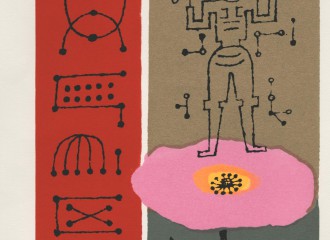
Heaven and Earth in Central Asia
In the 1960s, Tomiyama travelled through Asia and Latin America in search of new artistic ideas, an experience that helped her develop her own “Asian visual language” that no longer felt either imitative or nationalistic but acknowledged Japan’s place in the Asian cultural and artistic tradition. This chapter of Tomiyama’s life actually began in 1961…
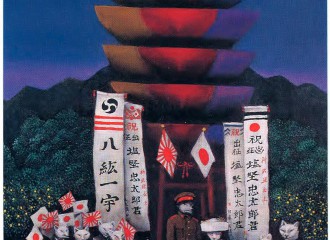
Harbin: Requiem for the 20th Century
In Tomiyama’s lifetime, Japan has radically changed its boundaries, its rules of government, and its society. Defeat in World War II, followed by partition of the globe along Cold War lines, meant not only that Japan was stripped of its colonies by the stroke of a pen in September 1945 but also that afterwards Japanese…

The Fox Story
The metaphor of the trickster fox and image of the fox wedding were so powerful that Tomiyama retained and extended them in her next series, The Fox Story. This set of three oil paintings and several collages is predominantly pale pink and golden-yellow, making it visually quite different from Harbin. In addition to the fox,…
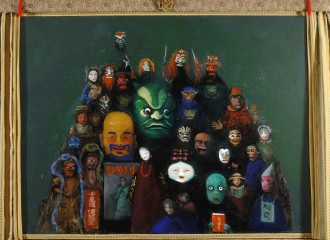
Hiruko and the Puppeteers
Tomiyama’s 2007-2009 series is her largest and most ambitious since Harbin. It sustains her longstanding focus on transnational history, warfare, and Japan’s relationship with Asia. The paintings and collages depict the journey of a group of Asian masks, dolls, and puppets from Central Asia via rivers to the Chinese coast; then on to Awaji, an…
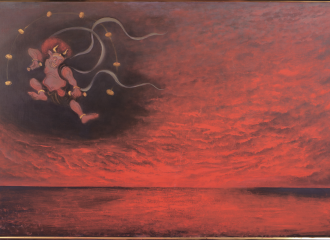
Revelation from the Sea
When Tomiyama completed Hiruko and the Puppeteers—A Tale of Sea Wanderers, she assumed that it would be the last of her major works. Then on March 11, 2011, the Tohoku region of Japan suffered a massive earthquake and tsunami. An estimated 18,456 people died or disappeared without a trace and whole communities were washed away.…
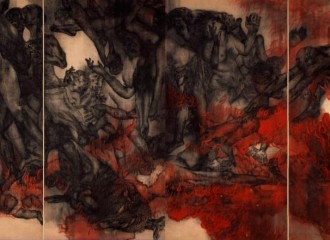
Maruki Toshi and Iri Collection
The Marukis, who were married to each other, are best known for their enormous joint paintings created between 1950 and 1982 that depict the aftermath of the atomic bombing of Hiroshima on August 6, 1945. Like Tomiyama, they struggled with the problem of how to balance their commitments to their political beliefs with their artistic…
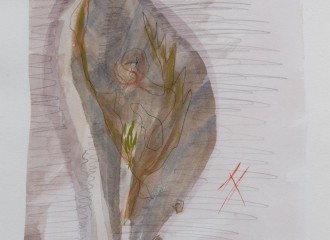
Eleanor Rubin Collection
In the arenas that shape international public opinion, Japanese are frequently charged with being unusually unwilling to admit the harm that their wartime state policies caused to others. Yet making this accusation requires looking comparatively; are the Japanese really so much worse at confronting their own ugly past actions than everyone else? Regrettably, such comparisons…
